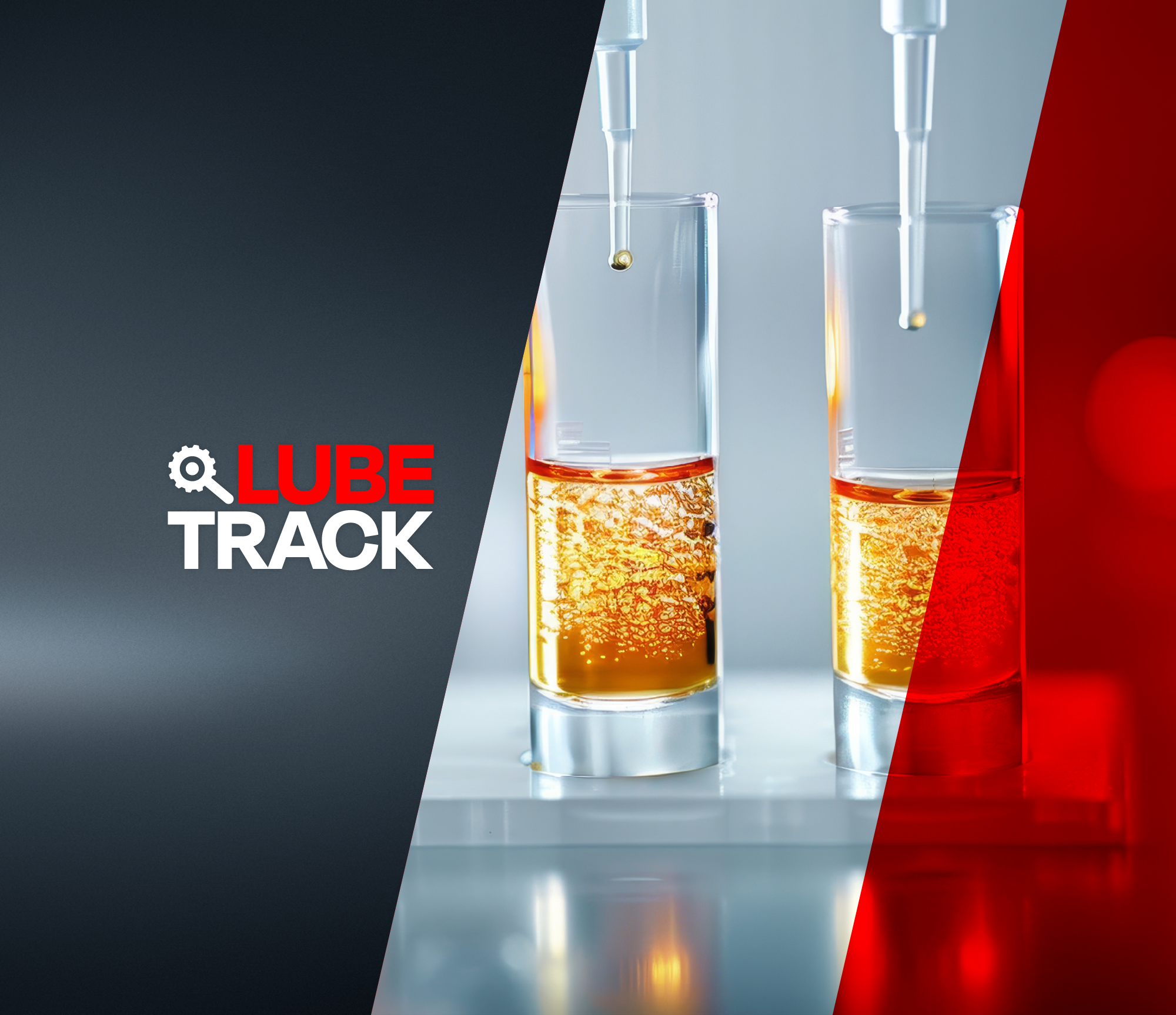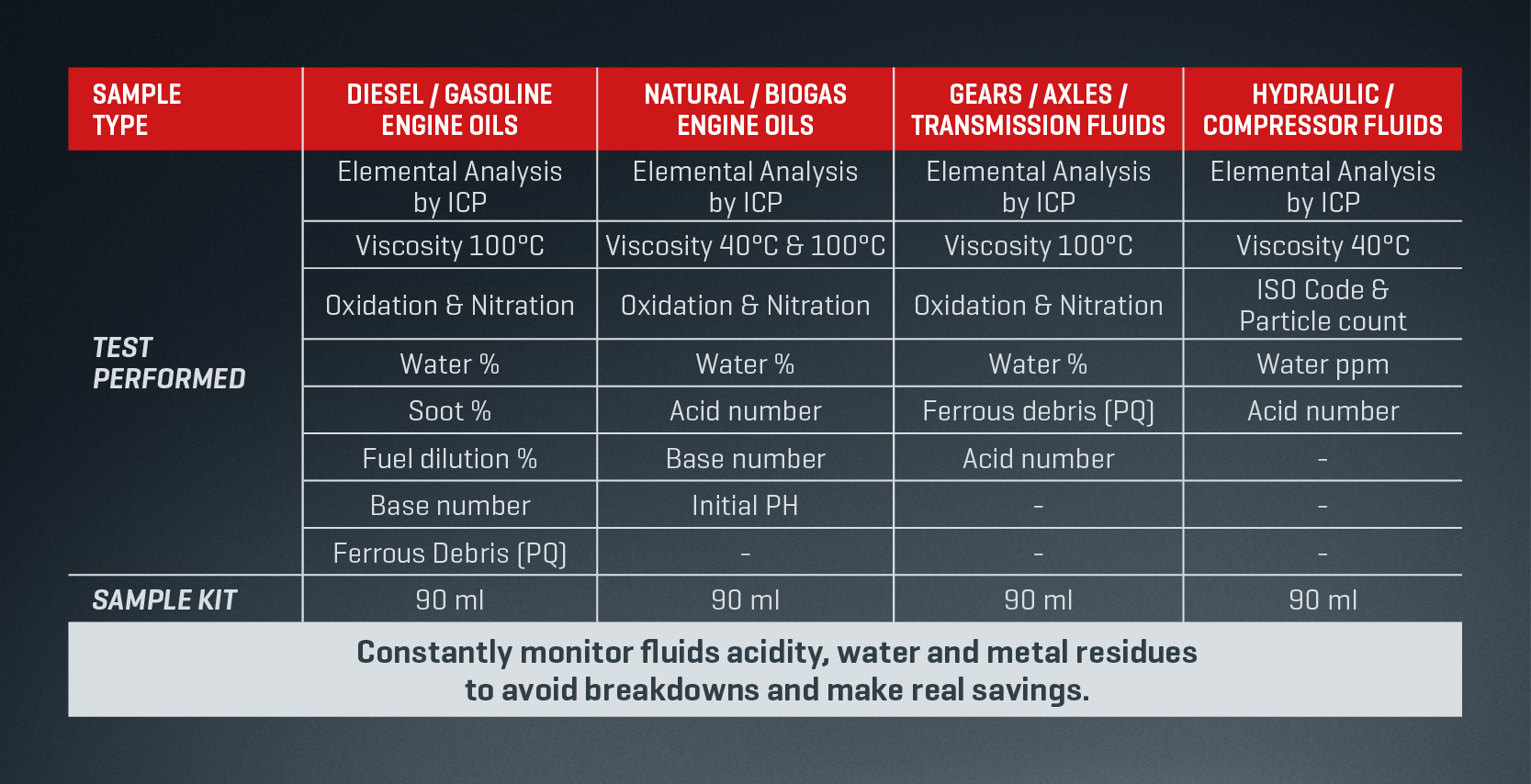
Why is oil analysis important for the heavy-duty sector?

Oil analysis is a key element of heavy-duty machinery and equipment maintenance programs. It provides insight into how oil performs in specific conditions, leading to valuable maintenance recommendations.
Machines can face harsh conditions that can place additional stress and wear on lubricants. Therefore, ensuring they continue to perform effectively, efficiently, and reliably is critical to long-term success.
What is oil analysis?
Oil analysis is testing lubricating oil used in equipment and machinery – from trucks and excavators to tractors. Through various tests, experts can understand the health of the oil and the machine itself, detecting potential issues and making maintenance recommendations. In fact, oil analysis and the implementation of recommended maintenance strategies have been proven to reduce the Total Cost of Ownership (TCO*).
*Definition of TCO: Total Cost of Ownership (TCO) goes beyond just the initial purchase price of a vehicle. It includes all costs related to buying, operating, and maintaining a commercial vehicle throughout its entire life. This covers expenses like fuel, maintenance, insurance, downtime, and the vehicle's resale value.
What are the main benefits of oil analysis?
Maximising the uptime of Heavy-Duty equipment is often critical to business or project success. Regular oil analysis can play a pivotal role in achieving this, leading to various operational and financial benefits.
1. Uptime and lifespan
Oil analysis can help operators determine the optimized maintenance schedule for machinery operating in a particular environment. This means that oil changes can be performed to a much more calculated schedule that takes into consideration loads and conditions, rather than arbitrary timing. This helps to minimize wear, boosting uptime and equipment lifespan.
Learn more about optimised maintenance schedules in this case study.
2. Early detection
Analysis can provide an effective early warning system, detecting potential issues before they affect productivity. Identifying contaminants or wear particles can help to avoid failures in the field, ensuring issues are addressed before potential breakdown.
3. Cost savings
It is possible to significantly reduce the Total Cost of Ownership (TCO) by leveraging oil analysis to tailor maintenance. Our technical partner POLARIS Laboratories® has seen analysis programs deliver a Return on Investment (ROI) greater than 40-to-1, with savings coming from reduced downtime costs, repairs, and replacements.
source: https://polarislabs.com/whypolaris/
What types of tests are included in oil analysis?
The types of tests available may vary, but they typically focus on key areas like oil degradation, which can change significantly based on operating conditions and the environment. Monitoring oxidation and other chemical changes is crucial, as these factors can impact the oil’s performance over time. Understanding this degradation helps determine the optimal oil change frequency.

The above chart demonstrates the benefit of including Base Number/Total Base Number [BN/TBN] in your Engine Oil analysis test package. Without the BN result, it is extremely difficult to assess the condition of the Engine Oil in use, therefore utilising condition-based oil drain intervals is not possible. Whilst the BN remains healthy, it is possible to extend and optimise the Oil Drain period*. The BN test measures the levels of reserve alkalinity remaining in the oil to combat crankcase acids which can build up in the engine. Monitoring the natural decrease in the BN value allows operators to plan oil changes around their operations.
* Extending and optimising oil drains also depends on monitoring several other parameters, including contamination and engine condition, all of which are also covered in LubeTrack.
Given the immense loads and extended operating time often experienced by equipment, oil analysis often includes the detection of common ‘wear’ metals. These can indicate excessive wear and potential failure of components. Linked to this are tests for additive depletion – with fewer additives to protect against wear, corrosion, and oxidation, the effective life of the oil is reduced.
Finally, tests can detect contaminants, such as coolant, water, or dirt. These not only compromise the oil but can also indicate other system failures that require attention.
Have a look at a lubricant analysis report here.
How does LubeTrack work?
When it comes to the Heavy-Duty sector, maximising uptime and maintaining performance throughout the lifespan of equipment and machinery is central to productivity. Here at Champion Lubricants, we are investing in the future of our HD offering with an exciting new service for our customers around the world.
We have worked with POLARIS Laboratories ® to streamline the system and achieve results within 48 hours. The process of analysing oil has never been simpler.
- Customers order sample bottles from their local Champion distributor.
- Once samples are collected, customers will ship these to POLARIS Laboratories ®.
- Analysis is completed within 48 hours and the results are shared directly with customers via email.
- Technical engineers will offer additional insight and recommendations where required.
Get started with world-class oil analysis
LubeTrack is available now and we are thrilled to support our customers with this innovative service. If you would like to order a sample kit, please use our online form.
